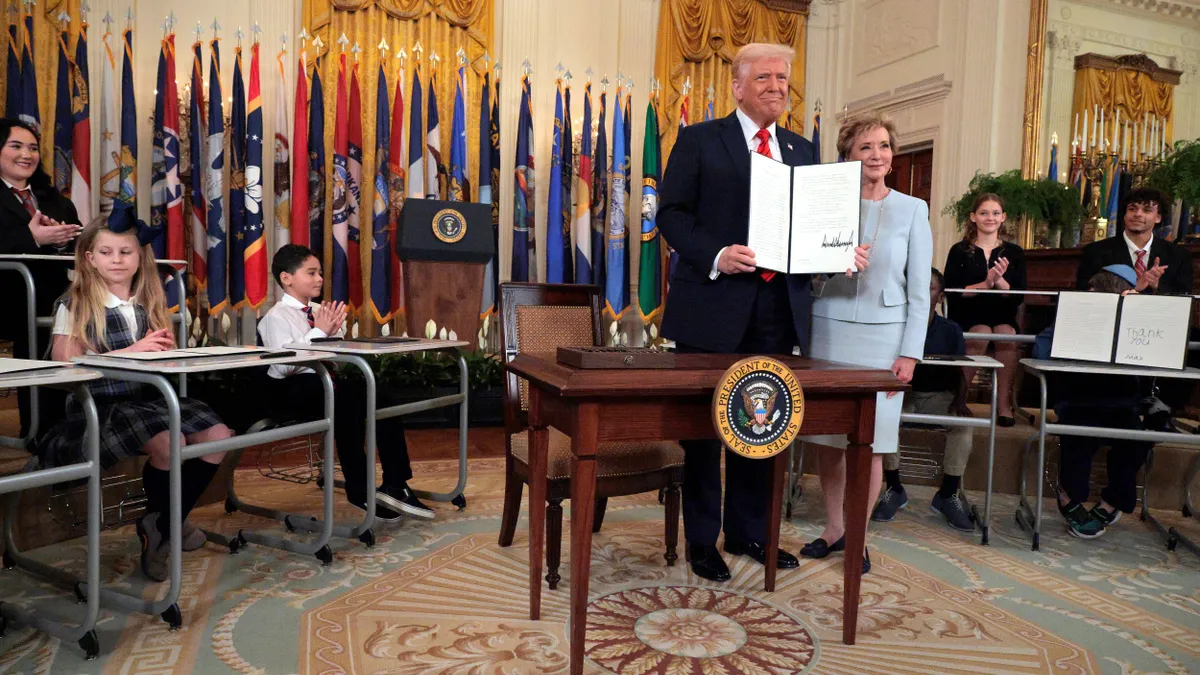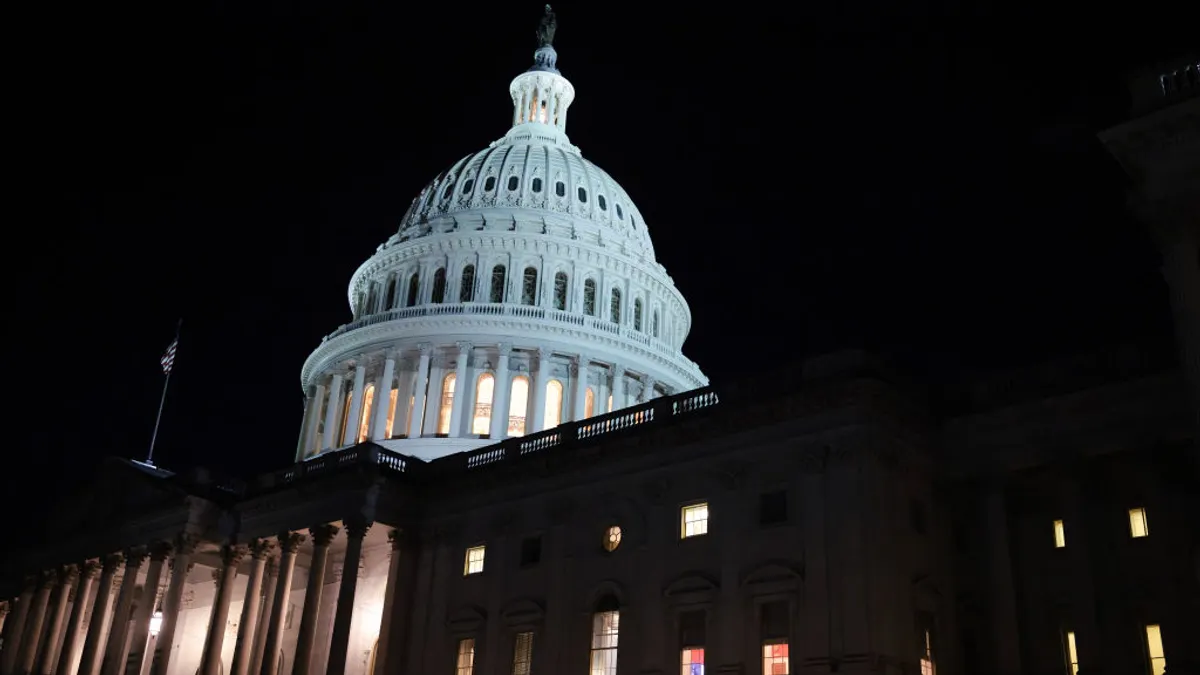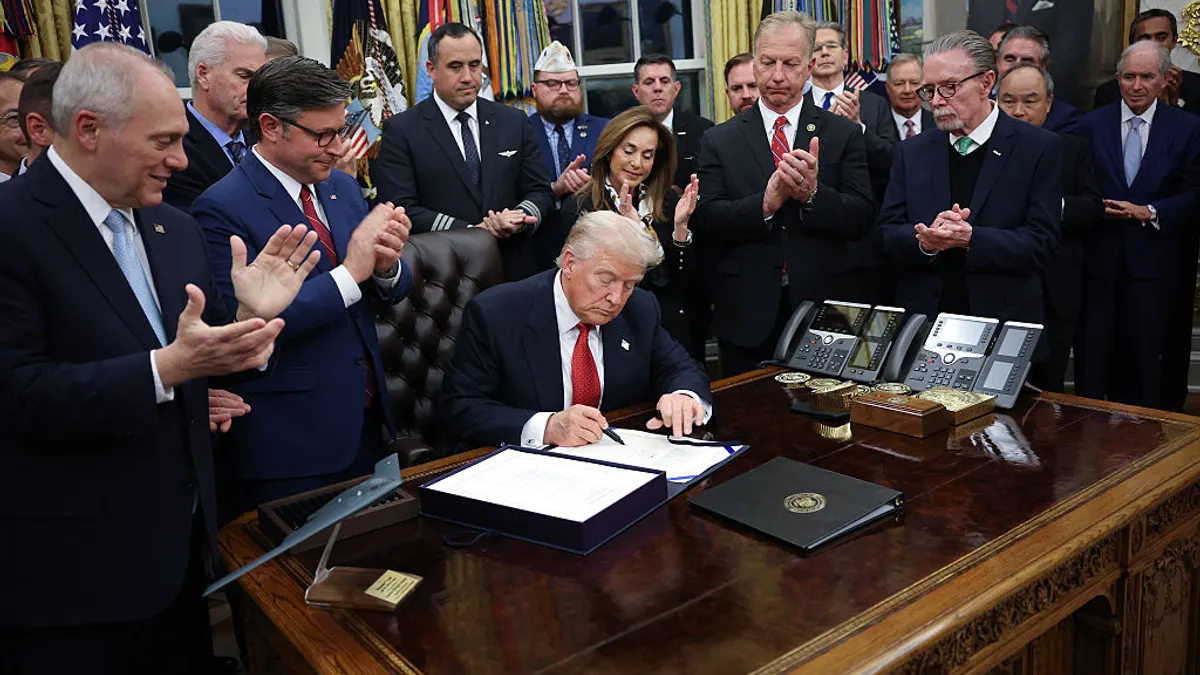As the nation reacts to a federal government shutdown, school administration organizations are communicating what will and will not change as a result of federal lawmakers' stalemate on funding for the new fiscal year.
First and most importantly, day-to-day operations for most schools will not be impacted by a short-term shutdown. That's because most of K-12 education is funded through state and local budgets. Federal funding, while critical, only covers about 14% of elementary and secondary education, although that percentage can be higher or lower depending on district demographics.
Additionally, school systems can still draw down federal grants awarded over the summer and the processing of the Free Applications for Federal Student Aid will continue, according to a Sept. 28 memo from U.S. Education Secretary Linda McMahon. The memo also said the U.S. Department of Education will make grant funds for Title I and the Individuals with Disabilities Education Act available as usual.
But the pause in federal funding will create some disruptions noticeable to school districts and state education agencies. Some examples include pauses in Office for Civil Rights investigations, new grant making activities and technical assistance support.
McMahon's memo said that only 330 of 2,447 employees at the Education Department, including those in the Office of Federal Student Aid, will remain on the job
In total, the Education Department is only expected to retain 5% of its workforce during the first week of the shutdown. Those continuing to work will not be paid during that time.
The shutdown follows a tumultuous few months at the Education Department as the Trump administration seeks to shrink the agency's footprint and give more fiscal decision-making to state and local governments.
McMahon and President Donald Trump want to close the Education Department by sending critical functions to other agencies. The year, the department's workforce shrunk from 4,133 to 2,447 as of Sept. 28. The reductions occurred mostly through layoffs, but also as a result of buyouts and attrition.
Some of the changes at the department have been challenged in court, including the layoffs of about half the employees who worked at OCR. The department had begun returning OCR employees to work as required by a district court order, but the 1st U.S. Circuit Court of Appeals on Monday said that was no longer necessary.
Sheria Smith, president of the American Federation of Government Employees Local 252, a union that represents Education Department employees, called the shutdown "the most menacing in recent history."
"It's evident that Congress needs to fund the government, but this administration has shown time and time again that America’s workforce is not its priority," Smith said in a Sept. 30 statement.
'On pause while politics plays out'
The shutdown officially started at midnight EST Wednesday after Congress could not agree on how to fund the government as the new fiscal year started Oct. 1. Because lawmakers were far away from finalizing an FY 2026 budget, Republican lawmakers wanted to approve a "clean" continuing resolution that funds the government for an additional seven weeks, buying time to negotiate a longer-term spending plan.
Democrats, on the other hand, wanted a continuing resolution that included health care spending and relief from cost of living increases.
Frustrations are high on both sides of the political aisle and among education organizations.
"America deserves leaders who put children, families, and communities first — not political games," said Becky Pringle, president of the National Education Association, in a Tuesday statement.
A short-term lapse in federal funding will not have dire impacts, education experts said, but concerns will increase the longer Congress is at a stalemate.
According to the Department of Defense Education Activity, which runs schools in the U.S. and abroad for children of the military workforce, schools will operate as normal with all school-level employees exempted from the shutdown. However, sports and extracurricular activities will be paused and DoDEA regional and headquarter staff will have minimal staffing.
AASA, The School Superintendents Association, in a Sept. 23 post, said school meal reimbursements won't be impacted by a short-term federal government fiscal impasse because the U.S. Department of Agriculture, which oversees school nutrition programming, typically has funding for three months of school meals following a shutdown.
Impact Aid is the only federal K–12 education program not forward funded months in advance of the new school year, according to AASA. This means this funding that supports districts that have lost property tax revenue due to the presence of tax-exempt federal property will have delays in receiving payments. Impact Aid funding is typically issued at the start of the federal fiscal year on Oct. 1.
The federal Heat Start programming for infants, toddlers and preschoolers from low-income families will continue and Head Start staff, who are not federal employees, will continue to work, according to the National Head Start Association, an advocacy group that represents Head Start families and workforce.
NHSA, however, warns that if a shutdown continues for weeks or months, there will be a higher risk of program closures and staff furloughs.
"We know children cannot put their development on pause while politics play out. As Congress moves forward, we urge lawmakers from both parties not only to resolve this shutdown but also to provide the increased funding needed to keep Head Start strong and sustainable,” said NHSA Executive Director Yasmina Vinci, in a Wednesday statement.
Head Start, which is administered by the U.S. Department of Health and Human Services, provides programming for 750,000 children and families annually. The federal Head Start Act marked its 60th anniversary this year.






















